DIY for your home network has become very popular in recent years and keystone jacks are an essential part of the home network installation. Keystone jacks are usually used in LAN connections and such kind of keystone jack can also be named Ethernet keystone jack or RJ45 keystone jack. But do you know how to select the right RJ45 keystone jack? If you’re non-professional, this article will give you a helpful guide. (Keystone jack in this article is mainly referred to as RJ45 keystone jack.)
What is a Keystone Jack?
A keystone jack is an important part of the local area networks (LAN). It is a standardized snap-in device that has a rectangular shape of 14.5mm width and 16mm height, so most keystone jacks on the market are interchangeable. Actually, a keystone jack is a female connector for connecting different kinds of devices with Internet and Ethernet cables. Ethernet keystone jacks are usually used in Ethernet wall plates, surface mount boxes, and patch panels.

Keystone Jack vs RJ45 Connector
If you’re a novice and have never known about the network installation before, you may find it hard to distinguish keystone jacks and RJ45 connectors. It is known that an Ethernet cable can only work when its ends are terminated by something and that is an Ethernet keystone jack and RJ45 connector. They look a bit different from their appearance. A keystone jack is a female connector that is designed to connect different jacks including RJ45 male plugs. An RJ45 connector is usually a male plug connected to Ethernet switch or router.

3 Tips on Selecting the Right Ethernet Keystone Jack
There are various keystone jacks on the market, do you really know how to choose the best Ethernet keystone jack for your home network? Here are several tips for you.
Category of Keystone Jack
The first thing to consider before buying is to check what category of Ethernet cable you’re using. To ensure your Ethernet cable can work to its maximum performance, the keystone jack should match the category of your network cable. There are different types of Ethernet cable on the market including Cat5, Cat5e, Cat6, Cat6a, Cat7, and Cat8.
The most popular Ethernet cable for the home network is the Cat6 Ethernet cable and it is usually paired with a Cat6 keystone jack. Nowadays, many people also began to install Cat6a Ethernet cables in their new homes. It depends on your own needs. (Learn more from Cat6 vs. Cat6a) But remember to choose the keystone jack of the same category so that the wires can properly fit the contacts of the keystone jack.
Keystone Jack Types
To meet the different needs of customers, there are also many types of keystone jacks on the market. Ethernet keystone jacks can be classified into shielded or unshielded, standard or toolless, and 90 degree or 180 degree.
Unshielded Keystone Jack vs Shielded Keystone Jack
Just like RJ45 connectors, Ethernet keystone jacks can also be divided into unshielded and shielded types. Whether you should use shielded keystone jacks or unshielded keystone jacks depend on the Electromagnetic Interference (EMI is an external disturbance that can affect the performance of the circuit). For most network installations, unshielded keystone jacks are enough for daily use. If you want to install a keystone jack at home or in the office building with no EMI, unshielded keystone jacks can be your first choice. But in EMI-rich environments, the shielded keystone jacks are needed to protect your network from external signal interferences.

Punch Down Keystone Jack vs Toolless Keystone Jack
Just take things literally, punch down keystone jacks should be terminated with a punch-down tool, while toolless keystone jacks never need an RJ45 punch down tool with the help of the two-side covers. Toolless keystone jacks can be shielded or unshielded and it depends on your own needs. Compared to punch down keystone jacks, toolless keystone jacks can be easier to operate, great for emergencies.

90 Degree Keystone Jack vs 180 Degree Keystone Jack
Keystone jacks come in different designs, and you can see 90 degree or 180 degree keystone jacks on the market. A keystone jack usually features a standardized front but its back can be different for various installations. There is no performance difference between two different angles and choose the best angle according to your preference and installation places.

Where to Install Keystone Jack?
Keystone jacks can be installed on wall plates, patch panels, and surface mount boxes. Some of you may be confused about what these devices are and how to choose the correct keystone jack. Read the following for more information.
Ethernet Wall Plate
One of the most popular way to use keystone jacks is to install them on the Ethernet wall plates. An Ethernet wall plate is usually used at home. It is easy to mount on the wall for Ethernet connections to rooms. And the keystone jack is easy to snap into a wall plate.

Patch Panel
The patch panel is generally seen in the data center and it is used to keep the Ethernet cable organized, enabling flexible network connection. By the way, patch panels are usually designed with 12 to 48 ports.

Keystone Surface Mount Box
A keystone surface mount box is a portable device that can be easily mounted on the wall or tabletop. It is a great idea to connect an additional network when it is needed.

In fact, it is your own preference to choose different keystone jacks for the wall plate, patch panel, or surface mount box. But under some circumstances, certain keystone jacks can be more suitable. For example, if you need to install a keystone jack to a patch panel that is against the wall, many people prefer to use 180 degree keystone jacks as they can be convenient and quick to install. A 90 degree keystone jack is more recommended to be used on surface mount boxes.
How to Punch Down a Cat6 Keystone Jack?
If you’re a novice of network installation, you may find it a bit difficult to install a Cat6 keystone jack. We’re here to give you an easy guide. Before the tutorial, you should prepare a Cat6 Ethernet cable, wire stripper, wire plier, Cat6 keystone jack, keystone punch down stand, and a punch down tool.
STEP 1: Use the wire stripper to strip the cable jacket.

STEP 2: Arrange the cable wires and use the cable jacket to straighten the wires.

STEP 3: Insert the wires into the groove of the Cat6 keystone jack according to T568A or T568B wiring standards. T568B wiring standard is more recommended.

STEP 4: Put the keystone jack on the keystone punch-down stand and use the punch-down tool to press the wires.

STEP 5: Use the other end of punch down tool to cut the wires.

STEP 6: Make sure that the wires are pressed to the bottom and cover the keystone jack with the cap.

STEP 7: Before mounting the keystone jack on the wall plate, use the RJ45 cable tester to ensure that it can work.

Final Thoughts
Before buying keystone jacks, you should ask yourself what category and type of keystone jacks you want to use and where to install the keystone jack. But it is also important to identify the quality of keystone jacks. For instance, a poor-quality keystone jack has copper contacts that are easily oxidized, which will affect the stability of data transmission. But a good keystone jack features 8 gold-plated contacts for a stable network. It is recommended to select the keystone jack from a reliable supplier or manufacturer.
For more information on this topic, you can keep up on our blogs. While VCELINK offers general and basic information for our customers and other visitors to the website, it’s not professional advice.
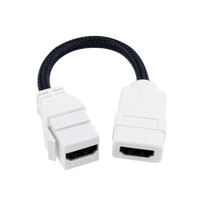
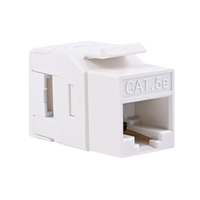
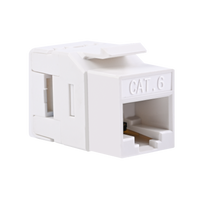
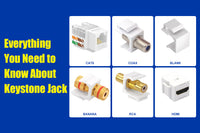
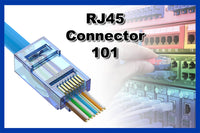
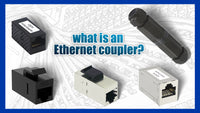
Be the first one to comment.
Leave a comment